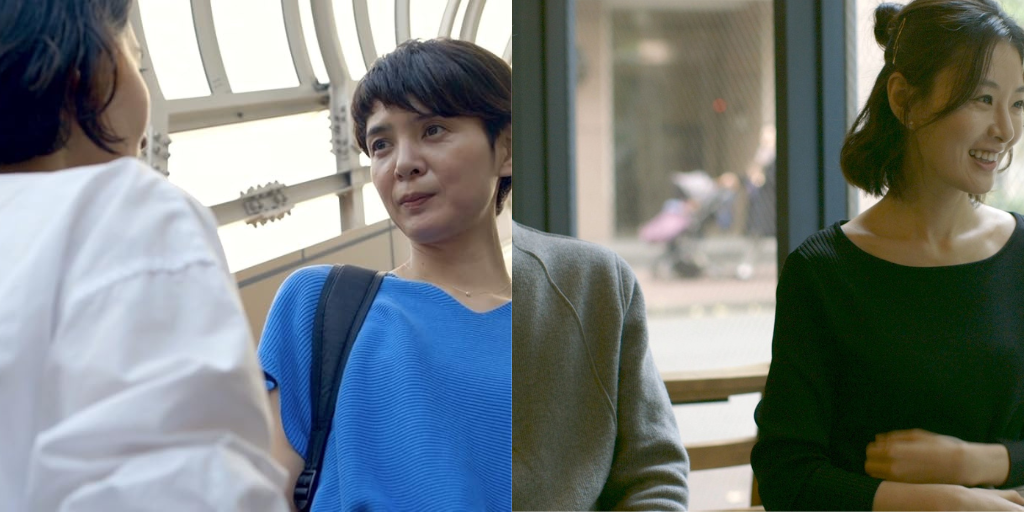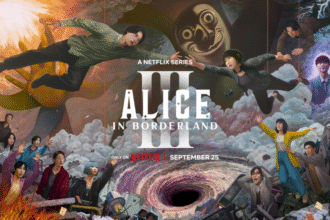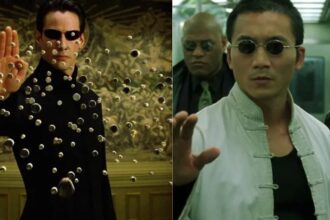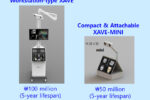
Ryusuke Hamaguchi’s Wheel of Fortune and Fantasy is not a single continuous story, but a collection of three self-contained yet thematically interconnected vignettes.
These chapters, titled Magic (Or Something Less Assuring), Door Wide Open, and Once Again, are each linked through the recurring concepts of fate, chance encounters, and the consequences of impulsive decisions.
While all three focus on human relationships, the third story, Once Again, is the one that carries the film to its emotional conclusion. Hamaguchi uses this format deliberately: each part offers a standalone narrative, but together they form a meditation on coincidence, longing, and the fragility of connections.
The use of understated performances and quiet dialogue allows emotions to simmer beneath the surface, creating an atmosphere where silence often speaks louder than words.
Also read: Juon: The Grudge Ending Explained, Unrelenting Curse of Vengeance
Themes of missed opportunities, complicated truths, and self-reconciliation emerge across the film. The final part doesn’t give a closed ending; it mirrors reality, where not all questions receive answers, and no single gesture can fix what has been broken.
Plot Focus: The Final Story’s Journey
The last chapter centers on Mieko, a woman whose life has been shaped by choices she regrets. Years earlier, as a student, she engaged in behavior that drastically altered the life of a professor, sending a personal and sensitive recording that resulted in his resignation.
This act, done without fully grasping its consequences, remains a defining wound in her life.
Five years later, Mieko’s life feels stagnant. An unexpected encounter with an old classmate draws her into a situation that reopens old emotional wounds.
She learns that this classmate is now engaged to a man from her past, the same man indirectly connected to that scandal. Although years have gone by, the unease from that chapter of her life has lingered like an unresolved chord.
When the two meet again, Mieko is overwhelmed by emotions that mix longing, regret, and an undercurrent of self-consciousness. Their conversation doesn’t lean into formal apologies or catharsis.
Instead, subtle shifts in tone, half-finished sentences, and small expressions suggest the heaviness of their shared past.

In a sudden and reckless moment, Mieko kisses him. This action is neither a grand romantic gesture nor an overt apology; it’s impulsive, almost a test of whether time has healed anything. Her choice encapsulates the messiness of human behavior: how unresolved guilt can manifest as unconventional attempts at connection.
The kiss is met not with anger but with uncertainty. He doesn’t react dramatically; instead, the moment lingers awkwardly, signaling that the past cannot be neatly rewritten.
Emotional and Psychological Layers in the Ending
The ending works on multiple emotional levels and intentionally refuses to settle into a single meaning.
Mieko’s guilt over her past act has shaped how she sees herself. Instead of confronting it directly, she has carried it quietly, and this meeting brings it to the surface.
Her impulsiveness in kissing him could be seen as an attempt to reclaim agency over a past that feels stuck in stagnation. Yet it also suggests that she’s still trapped in patterns of behavior where emotion overrides reflection.
Mieko’s struggle is not just about one mistake; it’s about her self-image. The ending suggests she has yet to separate her identity from the incident. Her uncertainty in the final moments hints at a person who is searching for a new narrative in which she isn’t defined by that single event.
The interaction between Mieko and the man avoids grand resolutions. This isn’t a love story rekindled or redemption neatly achieved. Instead, their meeting becomes a testament to the ambiguity of human emotions: connections often remain unresolved, carrying both warmth and discomfort.
The very fact that they meet again after so many years speaks to the film’s larger interest in coincidence. Chance encounters, Hamaguchi suggests, may present opportunities for change, but they can also unearth emotional debris we thought had been buried.
Symbolism and Cinematic Choices in the Ending
Hamaguchi employs subtle cinematic tools to create the atmosphere of the final moments.
-
Framing: Many shots in the last sequence keep the characters slightly apart, often framed with visual barriers, subtly highlighting emotional distance despite physical closeness.
-
Pacing: Long takes with minimal cuts slow the moment, allowing awkward silences to ring as loudly as dialogue.
-
Light and Shadow: The soft, changing light in the final tram scene mirrors Mieko’s shifting emotions. Moments of brightness give way to shadows, implying that clarity and uncertainty coexist.
The kiss itself is staged without heightened drama. There is no musical swell or sweeping camera movement, keeping the action grounded in realism. This stylistic restraint reinforces the film’s thematic interest in understated, everyday actions that nonetheless carry enormous emotional weight.
Interpretations of the Ending
The openness of the final scene has prompted varied readings:
-
A Brief Attempt at Liberation: Some viewers interpret the kiss as a release, an acknowledgment that Mieko is still capable of emotional spontaneity, even if it doesn’t solve her problems.
-
A Cyclical Pattern: Others see it as evidence that Mieko hasn’t changed much, repeating impulsive behavior without fully addressing its roots.
-
A Spark for Self-Reflection: There is also the view that this meeting plants the seed for Mieko to reassess her life. Even if nothing tangible changes immediately, it may be the first step toward a different future.
What’s striking is that the film doesn’t assign a moral judgment. The act is neither celebrated nor condemned outright; it’s one incomplete chapter in an ongoing personal story.
Broader Implications Beyond the Film
By avoiding clear closure, Hamaguchi taps into a universal truth: in real life, emotional threads often remain loose. People do not always get the apologies, reconciliations, or answers they want.
Sometimes, the most we can hope for is a moment of mutual recognition, a shared acknowledgment of the past without the expectation of rewriting it.
This approach resists the pressure to make every conflict fit into a clean resolution. It accepts that human connection is often defined by uncertainty, and that ambiguity can be as meaningful as clarity.
Why the Ending Resonates
What makes the ending of Wheel of Fortune and Fantasy impactful is its authenticity. Mieko’s moment on the tram, the subtle changes in her expression, and the quiet after the kiss all resonate because they reflect a truth about human behavior: emotions are rarely straightforward, and resolution isn’t always attainable.
Hamaguchi crafts an ending that allows space for interpretation, space for discomfort, and space for the ongoing process of self-understanding. By doing so, the film encourages the audience not just to watch Mieko’s journey, but to consider their moments of unresolved tension and unfinished conversations.
In this way, the final story transforms from a specific narrative about one woman’s choices into a broader reflection on how people live with their past, handle unexpected reunions, and wrestle with the meaning of connection over time.
Also read: Ringu Ending Explained, Unseen Curse and Lingering Fear








